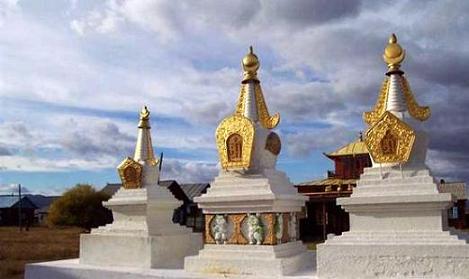
La Republic of Buryatia It is located in central Siberia and is adjacent to Lake Baikal. The population is 450.000 people and a large percentage live in various regions of the Russian Federation and the CIS, as well as in parts of Mongolia and the ROC Peoples.
The people of Buryatia have their ethnic origin is a mixture of Mongolian, Turkish, Tugus, Saoyed and other peoples. Ties between Mongols and the Buryat tribes have been close throughout the centuries.
The Republic of Buryatia is considered one of the cultural centers of Eastern Siberia. And in its capital Ulan, there are theaters and arts, such as the Opera and Ballet, the State Academic Dramatic Theater and the "Uliger" Doll Theater. The names of the one-stage Buryat masters are widely known.
The area of modern times Buryatia was colonized in the 1600s by Russians in search of riches, furs and gold. In 1923, the Buryat-Autonomous Mongolian Soviet Socialist Republic was created by the union of the Buryat-Mongol and Mongol-Oblasts Buryatia.
In 1937, Aga Buryatia and Ust-Orda Buryatia broke away from the Buryat-Mongol Autonomous Soviet Socialist Republic and merged with the Chita and Irkutsk provinces, respectively. Furthermore, the Olkhon district was transferred from the Buryat-Mongolian Autonomous Soviet Socialist Republic to the Irkutsk province.
The Parliament of the Republic is the Jural of the People, elected by the people every four years and has 65 deputies. Lubsanov Alexander has been the current President of Jural Popular since 2002. The economy of the Republic is made up of important agricultural and commercial products, including wheat, vegetables, potatoes, wood, leather, graphite and textiles. Fishing, hunting, fur farms, sheep and livestock, mining, ranching, engineering and food processing are also important economic generators.
Institutions of higher education in the Republic include the Buryat State University, the Buryat State Academy of Agriculture, the East Siberian State Academy of Art and Culture, and the East Siberian State Technological Institute.
